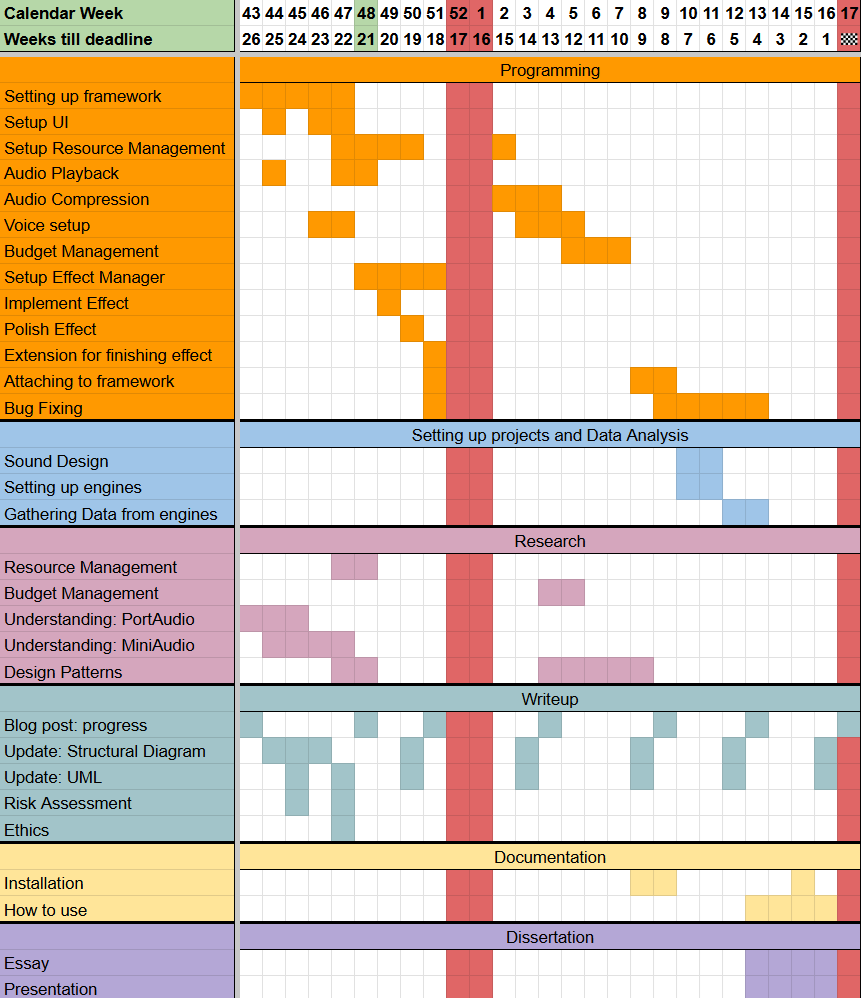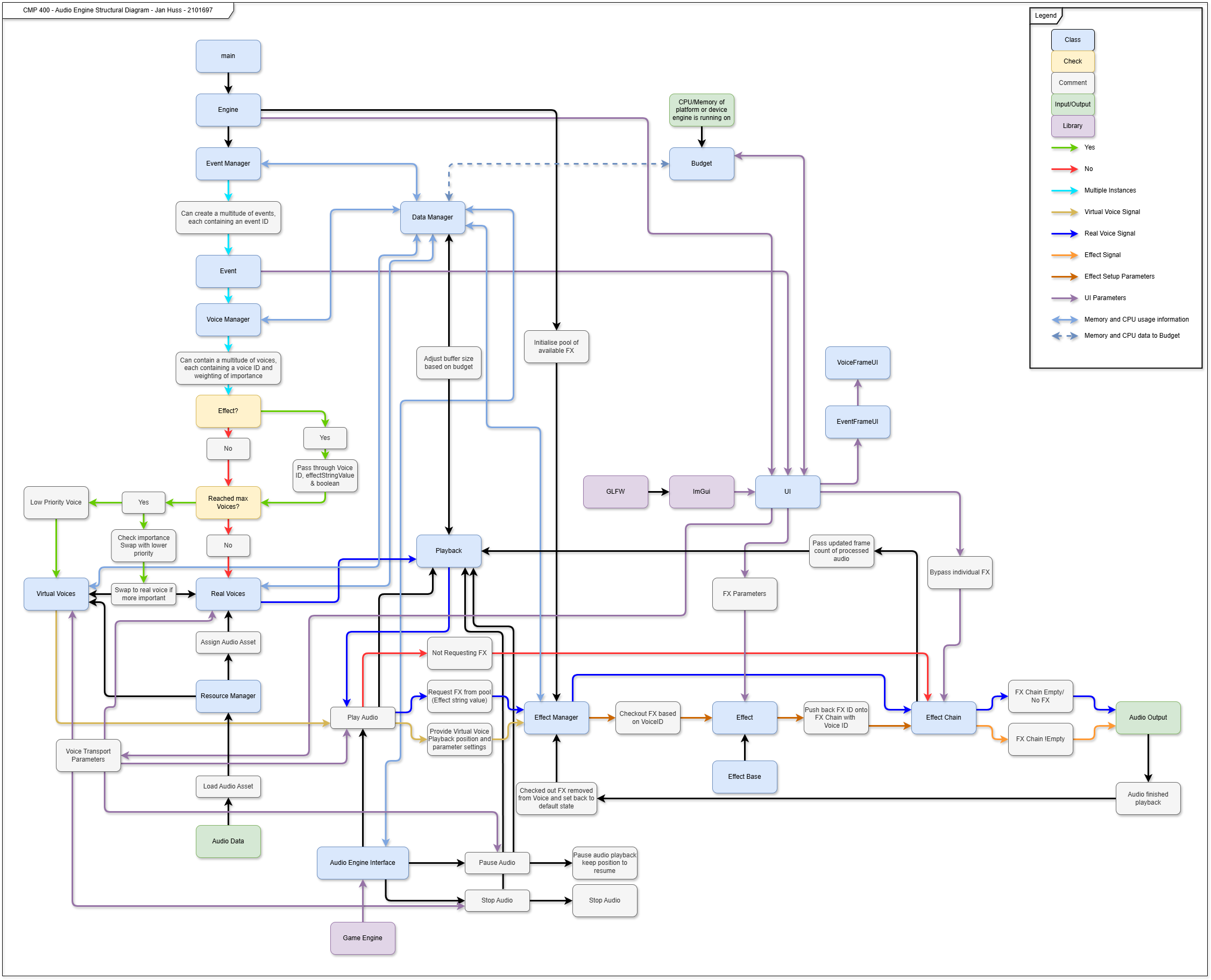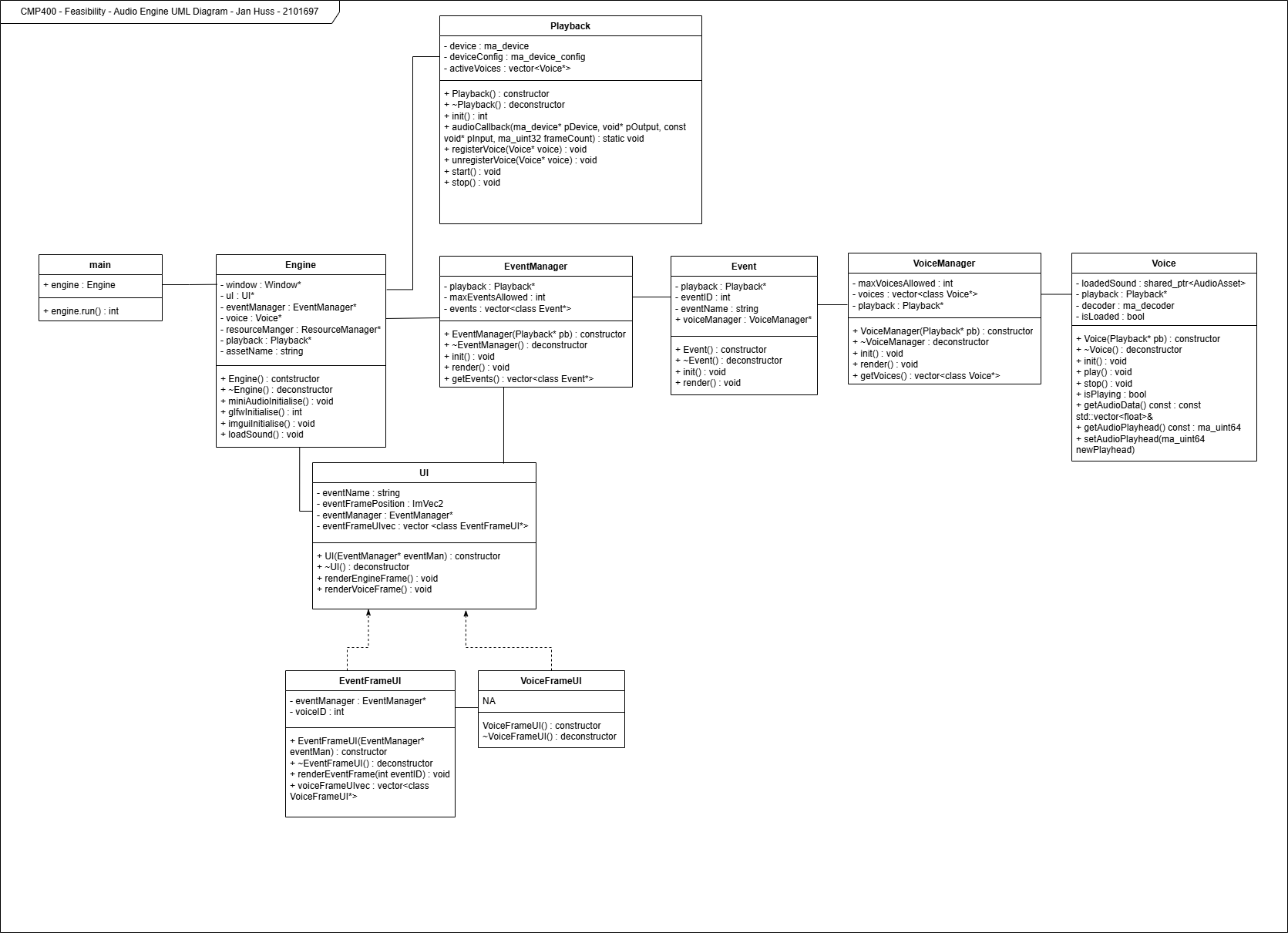Building an Audio Engine
My Honours Project Journey
Introduction
For my honours project, I set out to design and build an audio engine for video games with a focus on memory allocation and efficiency.
The project was inspired by Rockstar’s RAGE Audio GDC talk, which first introduced me to the idea of audio budgets — an essential part of optimizing game audio. Throughout this journey, I aimed to:
- Understand the structure of an audio engine.
- Analyze how asset usage can stay within a given budget.
- Implement the audio engine into a simple game to showcase the complexity behind triggering audio data.
This blog documents the key milestones, research, and challenges I faced while developing this system. Although the honours deadline has passed the project is still ongoing and will be updated over time. With time, I hope that the audio engine can act as an educational tool for anyone interested in building their own.
Research & Project Proposal
Before development, I was required to submit a project proposal, detailing:
- What I am building: An audio engine optimized for CPU and memory efficiency.
- Why this matters: Audio optimization is a key factor in game development, and I wanted to explore how to build an efficient system from the ground up.
- How I would approach it: Researching audio engine architecture and working with existing libraries to compare performance.
Resources & Inspiration
To prepare, I explored multiple books and talks on game audio programming:
- Game Audio Programming (Guy Somberg – Vol. 1-4)
- From Beep to Boom (Simon Goodwin)
- Game Engine Architecture (Jason Gregory)
I also tested different audio libraries:
- PortAudio – Good for loading data but not ideal for real-time playback.
- Miniaudio – A lightweight single-header library supporting multi-format playback.
After gathering research, I submitted my proposal, marking the start of development.
Feasibility Demo – Proving the Project’s Viability
The next major milestone was the Feasibility Demo, where I had to prove that my project was achievable by showcasing early progress.
Required Deliverables:
- A Gantt chart outlining tasks until final submission.
- Research question and project scope updates.
- A running application showing core functionality.
- A UML diagram and structural breakdown of the engine.
Gantt Chart
Structure Diagram
UML Diagram
Technical Development & Key Changes
The initial development process involved setting up a repository and experimenting with different audio playback systems.
- Originally, I used PortAudio for loading and Miniaudio for playback, but I later removed PortAudio entirely.
- Why?
- Miniaudio could handle both loading and playback, simplifying the structure.
- It was easier to understand one system deeply rather than working with two.
- PortAudio’s .lib file was causing repository issues, making cross-device work frustrating.
After removing PortAudio, my productivity and motivation improved, allowing me to focus more on developing the engine.
Redesigning the audio engine
During development, I bottlenecked the engine. It was still maintainable but I quickly realised that there were two options available to me:
- Refactor the code and keep on working on a complex software
- Redesign the engine and investigate how to optimise its complexity
Given that I have been told in the past how peers have talked about building multiple engines until they reached a conclusive and stable build, I decided to take a step back and start the audio engine from the beginning again. Would this set me back by almost an entire term? Yes. But it turned out to be a necessary step in order for me to realise why I bottlenecked in the first place. It made me re-evaluate my software design skills and it allowed me to explore various, useful design patterns such as the Composite Design Patter and Object Pool Patterns, but also discover various C++ options such as Function Pointers.
Long story short, starting from the beginning was part of the process all along.
Final Thoughts & Future Plans
This project reinforced my passion for audio programming and game engine development but also helped re-evaluate my software design skills and discover new areas within C++ code.
Key takeaways:
- Audio engine optimization is both an art and a science — balancing performance, memory, and functionality.
- There is still so much to explore — I plan to continue developing this engine until I can consider it stable and free from the miniaud.io library.
The honours project was just the starting point of this journey into game audio engine development! More updates will follow as development continues.


